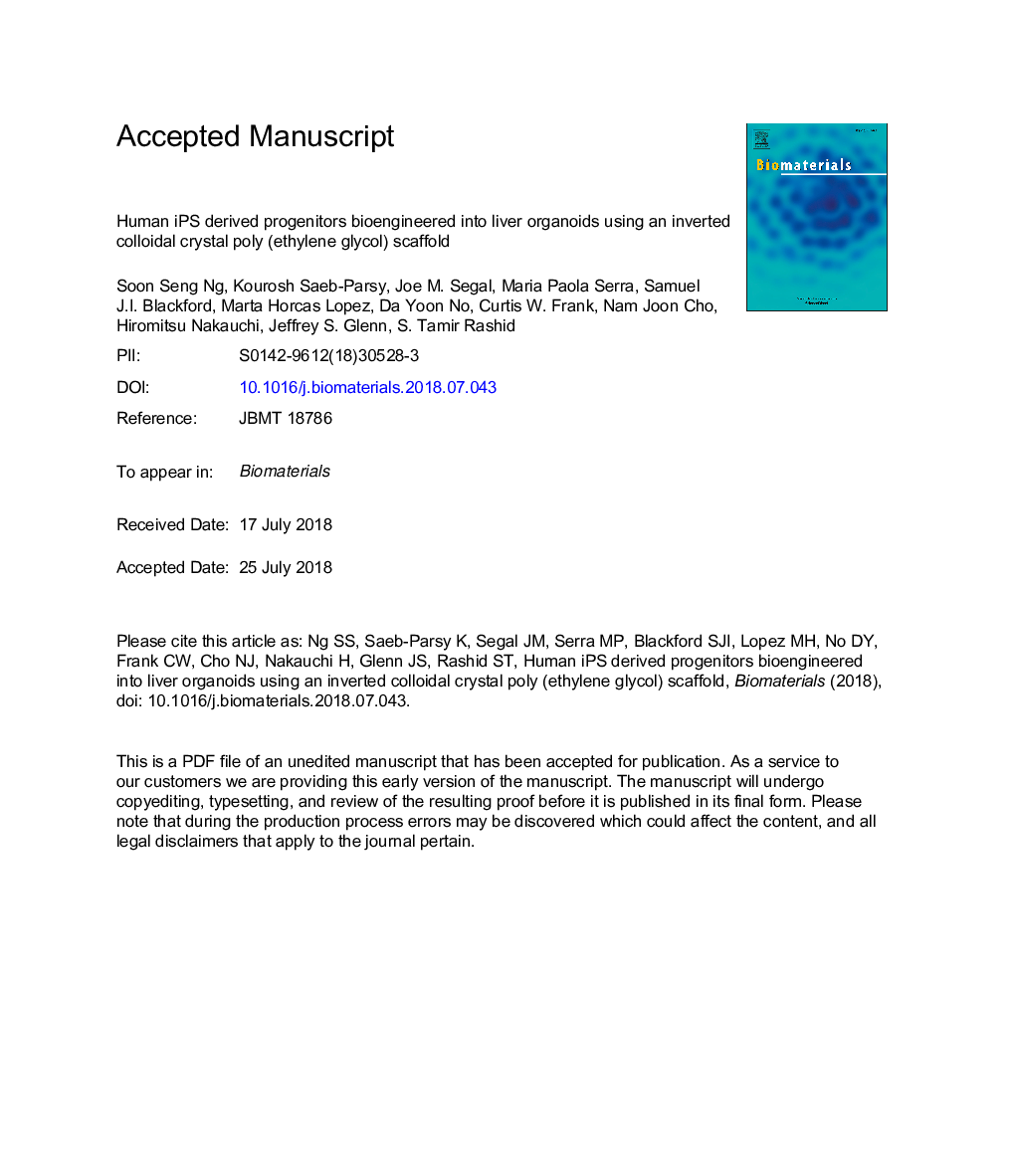| Article ID | Journal | Published Year | Pages | File Type |
|---|---|---|---|---|
| 10999770 | Biomaterials | 2018 | 37 Pages |
Abstract
Generation of human organoids from induced pluripotent stem cells (iPSCs) offers exciting possibilities for developmental biology, disease modelling and cell therapy. Significant advances towards those goals have been hampered by dependence on animal derived matrices (e.g. Matrigel), immortalized cell lines and resultant structures that are difficult to control or scale. To address these challenges, we aimed to develop a fully defined liver organoid platform using inverted colloid crystal (ICC) whose 3-dimensional mechanical properties could be engineered to recapitulate the extracellular niche sensed by hepatic progenitors during human development. iPSC derived hepatic progenitors (IH) formed organoids most optimally in ICC scaffolds constructed with 140â¯Î¼m diameter pores coated with type I collagen in a two-step process mimicking liver bud formation. The resultant organoids were closer to adult tissue, compared to 2D and 3D controls, with respect to morphology, gene expression, protein secretion, drug metabolism and viral infection and could integrate, vascularise and function following implantation into livers of immune-deficient mice. Preliminary interrogation of the underpinning mechanisms highlighted the importance of TGFβ and hedgehog signalling pathways. The combination of functional relevance with tuneable mechanical properties leads us to propose this bioengineered platform to be ideally suited for a range of future mechanistic and clinical organoid related applications.
Keywords
OCLNSCARB1HNF4AALBCK19RT-qPCRMSCHUVECLDLRTGFβIPSCMrp2BSEPCLFClaudin 1ZO-1CYCCLDN1RNA-seqECMTGZFDAThree-dimensionaleCAMICCH&EPCAAlbuminalpha-fetoproteinOrganogenesisTransforming Growth Factor BetaPrinciple component analysisTroglitazoneAFPtwo-dimensionalFood and Drug AdministrationMesenchymal stem cellInduced pluripotent stem cellLiver stem cellscyclopamineOccludinFibronectinLamininExtracellular matrixBioengineeringBiomimetic materialsepithelial cell adhesion moleculehaematoxylin and eosinHepatitis C virusHCVReverse Transcription-quantitative Polymerase Chain Reactionmultidrug resistance protein 1polyethylene glycolPEGkeratin 19CollagencolLow-density lipoprotein receptorscavenger receptor class B type 1
Related Topics
Physical Sciences and Engineering
Chemical Engineering
Bioengineering
Authors
Soon Seng Ng, Kourosh Saeb-Parsy, Samuel J.I. Blackford, Joe M. Segal, Maria Paola Serra, Marta Horcas-Lopez, Da Yoon No, Sotiris Mastoridis, Wayel Jassem, Curtis W. Frank, Nam Joon Cho, Hiromitsu Nakauchi, Jeffrey S. Glenn, S. Tamir Rashid,
